How Running This Rust Belt City Became One Of The Toughest Jobs In America
- Oops!Something went wrong.Please try again later.
- Oops!Something went wrong.Please try again later.
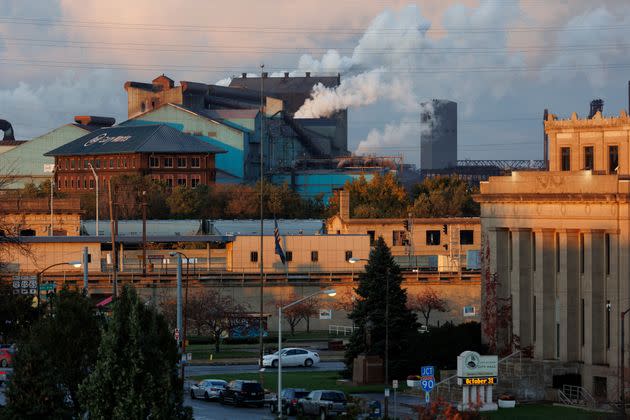
Smoke rises from the U.S. Steel Corp.'s factory by the Gary Metro Center tracks in Gary, Indiana, on Oct. 31. To the right is City Hall.
You’ve probably never heard of Indiana state Sen. Eddie Melton.
But you may be familiar with Gary, Indiana, the small Rust Belt city once known as the birthplace of Michael Jackson, though better known nowadays for its shocking degree of blight due to the contraction of the U.S. steel industry.
And you may have even come across a YouTube video of Gary with a sensational title designed to get you to click to see some of the worst scenes of the city: “America’s Most ‘Miserable’ City,”“America’s Gangster Ghost Town,”“Gary: The USA’s Most Dangerous City? What I Actually Saw.”
Melton is the guy who wants to make these videos go away.
“We’re not going to allow YouTubers to come to our city and run through a couple of abandoned buildings and let the algorithm dictate our future,” Melton said not long before he was elected mayor of Indiana’s ninth-largest city, just 40 miles southeast of Chicago on Lake Michigan. The 42-year-old Democrat won this month’s mayoral race in what could conservatively be called a landslide with 95% of the votes.
YouTube’s urban explorers have even discovered Melton’s alma mater, Horace Mann High School, one of 33 abandoned schools in Gary. It’s a husk of a building with a gigantic crumbling auditorium and dark hallways lined with lockers that hang off their hinges like broken teeth — a haven for people seeking out decay.
“They care so little about this place, I guess, that everything just sits open nowadays,” remarked one YouTuber, Jared Coker Urbex, after visiting the building, which hasn’t seen a class of students in almost 20 years.
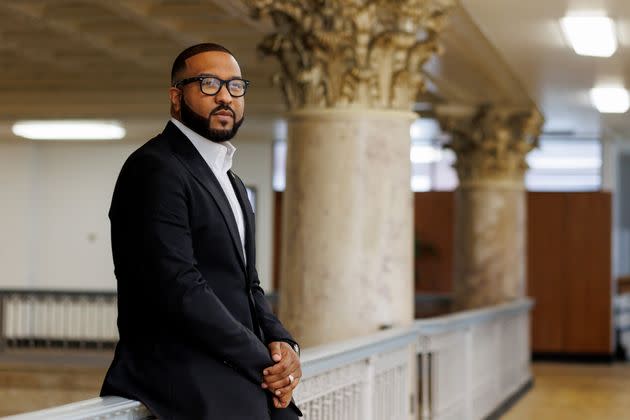
State Sen. Eddie Melton, shown here in the Gary State Bank Building, was elected the mayor of Gary on Nov. 7 with 95% of the votes and will be sworn in on Jan. 1. He's the third consecutive Democrat to oust an incumbent mayor in a primary.
If being mayor is one of the hardest jobs in America, then being the mayor of Gary, Indiana, a deeply challenged blue city in a deeply red state, is its toughest assignment. It’s a fact that hasn’t been lost on Melton or any of his recent predecessors, who were ousted in contentious primaries over the almost nonexistent pace of revitalization and the obvious signs of it across the city. Roughly 20% of homes sit empty, the highest percentage of any city in the country.
Gary is the story of how one deindustrialized, majority-Black city, despite vows from both Donald Trump and Joe Biden to revive elements of domestic manufacturing — one by bringing steel and coal plants roaring back to life, the other by historic investments in clean energy — has been almost immune to sustained improvement. The reasons for this range from systemic racism at the state level to Gary’s own decades of shitty luck.
“Once you start a downward spiral, unless you can get a major new employer or major news event or major new project, then it just feeds on itself,” said Paul Helmke, who teaches law and public policy at Indiana University and is a former Republican mayor of Fort Wayne, Indiana, which managed to diversify its economic base while Gary fell further behind other cities. He cited Gary’s inability to annex neighboring communities, a strategy other deindustrialized Indiana cities used to grow their tax bases, and property tax caps that hit the city especially hard as reasons for the decline.
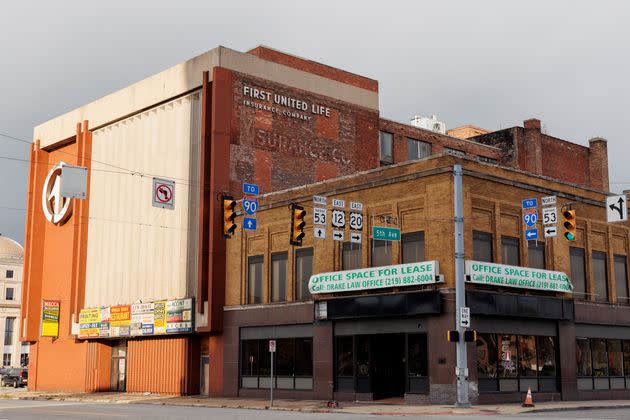
A view of a building for sale in downtown Gary on Oct. 31. Melton has vowed to revitalize the city as mayor.
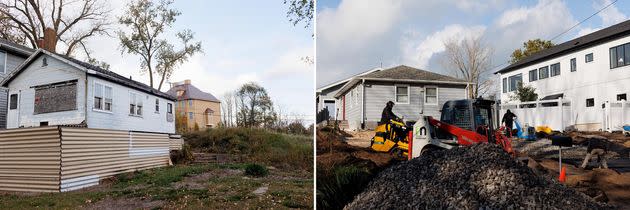
Gary's Miller Beach is one of the city's most desirable neighborhoods, but the lakefront area isn't immune to the city's epidemic of abandoned homes.
Gary, in northwest Indiana’s Lake County, has long been viewed as an area of the state “where political corruption happens … where African Americans live,” Helmke said. “It’s always sort of been the stepchild of the rest of the state.” Helmke also pinned Gary’s woes on “latent racism on the part of the legislature.”
All of that makes the job of actually running this city in a way that spurs development almost impossible. Gary’s remaining residents are quick to trust new leaders but even quicker to toss them aside when they don’t produce results, as evidenced by the fact that Gary hasn’t reelected a mayor since 2015.
Karen Freeman-Wilson, the president and CEO of the Chicago Urban League and the last mayor reelected here, likened the persistent forces that Gary is up against to a “really extreme weather event … like a hurricane or tornado.”
She called the job a “labor of love — but it was definitely a lot of labor.”
Jerome Prince, the mayor whom Melton beat in the May Democratic primary — the de facto general election in a city this blue — said he has no regrets about taking on the job but seemed almost a little relieved to be moving on after a single term.
“It’s the toughest assignment I’ve ever had in my life,” Prince said. “There’s always a rollover political dynamic to things — that’s human nature, I get it. But I’m honored to have served.”
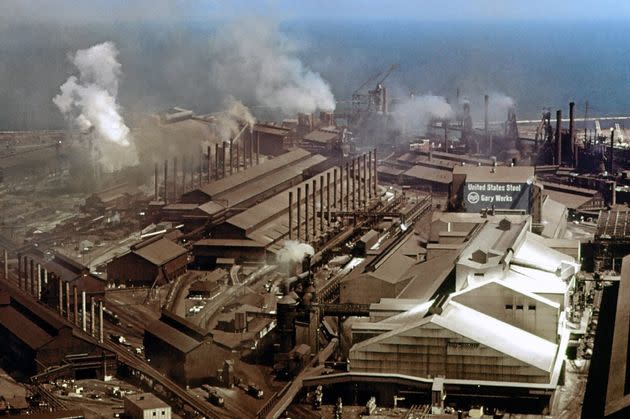
Gary was founded as a company town by U.S. Steel, which at one time employed 25,000 people in the city. Now it's down to 4,300 employees at the Gary Works mill.
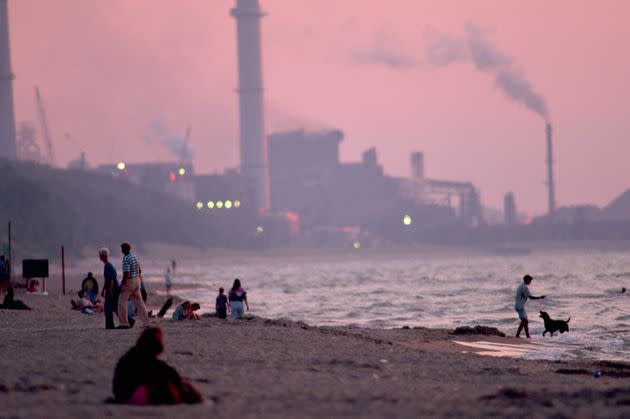
Gary's steel mill as seen from the beach at Indiana Dunes State Park.
Gary was founded as a company town for U.S. Steel in 1906, but the offshoring of steel manufacturing in the latter half of the 20th century decimated the city. It has lost more than 60% of its population since it topped 178,000 in 1960 — largely in the form of “white flight” to the suburbs. The population has continued to decline, dipping below 68,000, according to the most recent census estimates. Gary, once Indiana’s second most-populous city, is no longer even the biggest city in its county.
Gary earned the title of “murder capital” in 1994 for having the highest rate of homicides per capita in the nation, beating Washington, D.C. Thirty years later, crime has gone down, but the reputation sticks. “What rubs me the wrong way is this perception — and I guess that started some years ago — that Gary is this incredibly dangerous place,” said Prince, who added that a big focus of his administration was policing.
“That was a very tough era for a lot of us,” said Melton, who credits his successful path in life with playing high school football and securing an athletic scholarship to Kentucky State University, a historically black university, before returning to Gary to work in the nonprofit sector. “The life expectancy at that time was very low for a young Black male.”
U.S. Steel still operates its flagship North American plant in Gary, employing 4,300 people — down from 25,000 decades ago. In 2019, the Fortune 500 company sought city and state tax breaks to modernize the plant and keep it in Gary, even though the upgrade could ultimately cost jobs. Meanwhile, 32% of Gary residents live below the poverty line.
It’s not clear that Trump’s 2019 steel tariffs, which the former president promised would protect the domestic steel industry from cheap Chinese imports, thereby boosting corporate profits and creating more jobs, had any meaningful effect on Gary’s factory workers or the city overall. And it’s too soon to tell how Biden’s ambitious push to incentivize electric vehicle production will affect workers across much of the deindustrialized Midwest, though EVs are thought to require less manpower to build.
For a time, Gary had the nation’s largest percentage of Black residents relative to its total population, turning it into a hub of Black political activism. Gary was one of the first major American cities to elect a Black mayor, Richard Hatcher, in 1967. It also hosted the first National Black Political Convention in 1972, a milestone event for a rising class of Black political leaders, including Rep. Bennie Thompson, a Democrat from Mississippi.
Thompson, who was back in Gary over the summer at Melton’s request, described the city to HuffPost as a “diamond-in-the-rough kind of community. You can’t look at it for what it is now. You look at it for what the potential can be going forward,” he said.
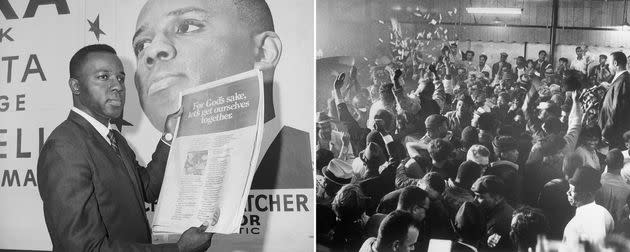
Left: Richard Hatcher looks at an advertisement in the Aug. 24, 1967, New York Times asking for contributions to his campaign for Gary mayor. Hatcher became one of the nation's first Black mayors. Right: Hatcher and his campaign staff cheer after learning he had won on Nov. 7, 1967.
Gary has been almost untouched by the political realignment that’s happened across much of the Midwest over the last decade. In 2016, when Trump vowed to fight for the “forgotten men and women” of the Rust Belt and bring back manufacturing that had long since gone abroad, Gary’s majority-Black population shrugged — as did many of the Black voters who helped put Biden in the Oval Office four years later. And even with polls showing Trump narrowing the gap in Black voter support if he faces Biden in a 2024 rematch, although still that phenomenon doesn’t seem to extend to Gary, which is dominated by one-party rule.
“I think a lot of [Republicans] have just completely given up,” said Andrew Delano, a 31-year-old real estate investor and Gary Republican who ran against Melton to bring attention to housing and tax issues. Delano, the first Republican to run for Gary mayor in almost a decade, came away from the election with 314 votes to Melton’s 6,376.
“I do think there are people that would fall more on the center-right political spectrum in the city than what the votes would otherwise show,” he said. “A lot of them don’t turn out because there aren’t actually [GOP] candidates on the ballot.”
Delano praised Trump for attempting to get tougher on China with steel tariffs but said too many in the GOP are ignoring the problems that continue to plague the middle of the country.
“They spent trillions on wars in the Middle East, and cities in the Midwest can’t fill potholes, and they have stoplights that don’t work,” he said.
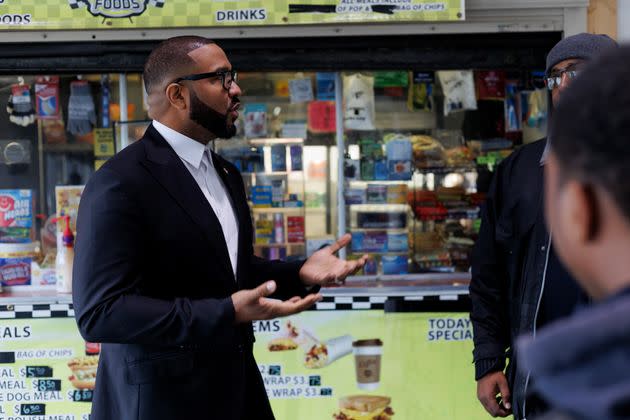
Eddie Melton speaks to Gary residents about their concerns and ideas for the city at the Adam Benjamin Jr. Metro Center in downtown Gary on Oct. 31. Melton supported a state Senate bill to fund revitalization of the train station.
Melton’s primary focus is stabilizing the city’s population by improving public schools, which are coming out of a state takeover caused by fiscal insolvency due to dwindling enrollment. He wants to tear down many of Gary’s 6,000 vacant homes and 300 abandoned commercial buildings. He wants to take better advantage of the city’s proximity to Chicago and the small international airport it has within its city limits. He wants people to know that Gary, located on Lake Michigan, has a national park with miles of trails winding through protected dunes.
But to do much of this, Melton will have to overcome Gary’s chilly relationship with Republicans in Indianapolis who’ve consolidated power from political realignment as much as from extreme gerrymandering.
Freeman-Wilson said Republicans tend to regard the city’s leaders as ill-intentioned and incompetent. In 2013, following an outbreak of violence, she wrote to then-Gov. Mike Pence asking for temporary state assistance to police the city. Pence responded by requesting information about how the assistance fit into the city’s “longer-term plans for self-sufficiency” following a tax hike — the implication being that Gary wasn’t using its own resources well enough to handle the problem.
“Any time something is financial, people assume you can manage your way out of it,” Freeman-Wilson said. “They assume there’s mismanagement. They assume there’s malfeasance. They assume there’s theft or corruption. And there’s an attitude that comes with that.”
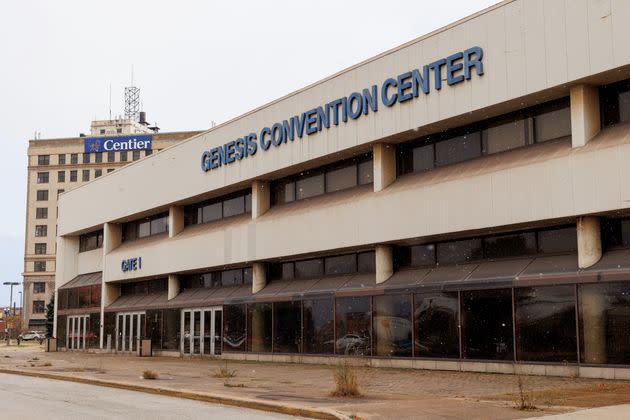
The abandoned Genesis Convention Center in Gary is one of the places that Melton said he hopes to restore.
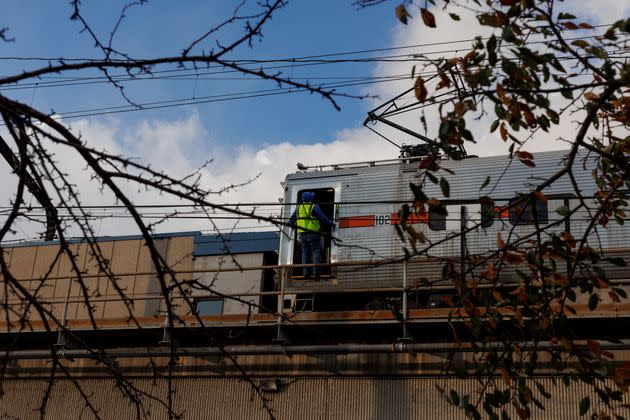
Gary leaders hope that transit-oriented development can help revitalize the city.
The people who see promise in the coming Melton administration note that he’s worked with Republicans in the statehouse since 2017 to deliver on legislative priorities for Gary, like a 2019 law that allowed Gary’s casino to relocate from an industrial harbor to be closer to a major throughway. Melton was also behind legislation that will allow the city to rebuild its train station and potentially construct a convention center. This is actual progress that’s eluded his predecessors.
“That’s why I ran,” said Melton, who used the campaign slogan “Gary Deserves Better” to convince voters that it doesn’t have to be like this forever.
“I wanted to offer stable, solid leadership that’s been trusted and tested,” he said. “You can’t get anymore tested than being a Democrat in Indiana and still able to get things done for your community.”
Yet when Melton insists that Gary will be the nation’s “greatest comeback story,” it can seem naive considering the reality of what he’s up against. Thousands of abandoned buildings. Chronically low tax collection rates. Melton will be running a city that struggles with fixing broken streetlights and yet must plan its way out of a decades-long systemic decline.
But Melton doesn’t see another way forward. It’s now or never.
“If you’re still in Gary, either you want to be here or you had no other option,” he said. “But the people that want to be here, they want to see a turnaround.”
